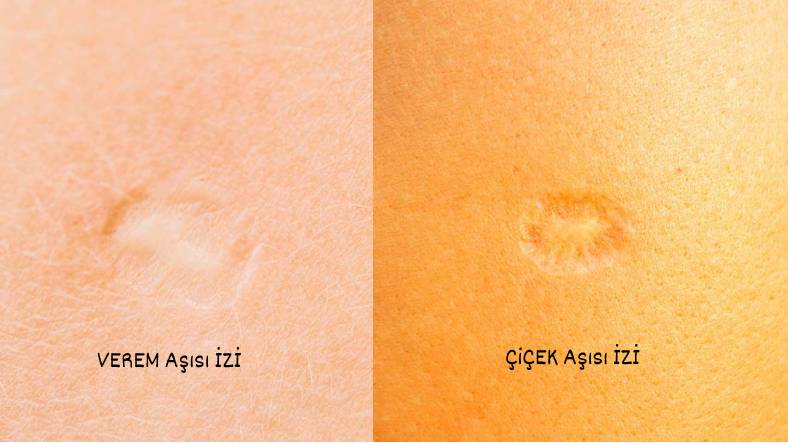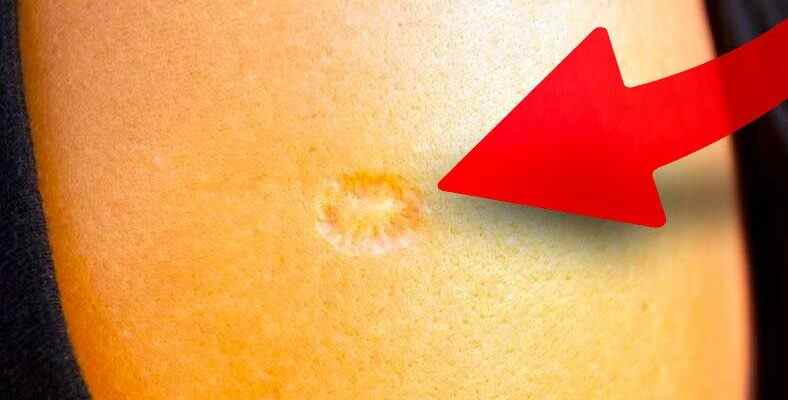Why did the smallpox vaccine, which completely eradicated the smallpox that killed hundreds of millions of people, left a huge scar on the arms?
Humanity was shaken by a deadly and great disease in the 17th and 18th centuries; smallpox. infected Known to have killed 3 out of 10 people And the salvation from this disease, in which those who survived the disease suffered from various disabilities, was by vaccination.
Smallpox vaccine, which is the first vaccine developed in the history of medicine and science, More than 300 million people died in the 20th century alone. buried this well-known disease in the dusty pages of history after many years of vaccination studies. But this vaccine left a different and permanent mark on people’s arms than other vaccines. Let’s see why the smallpox vaccine left scars on the arms.
Why did the smallpox vaccine leave a big permanent scar on the arms?
Smallpox vaccine was injected using a different method than vaccines are administered now. Vaccines are usually with a single-pointed needle being injected. Most of them go deeper than the upper layers of the skin; It is injected under the muscle tissues.
However, in smallpox, the situation was different in both respects. Vaccine, with a forked, two-pointed needledermis, which is a lower layer of the epidermis, which is the uppermost layer of the skin; It is injected by making a few holes. The injected vaccine begins to multiply in this area and a lump called a papule forms. This lump turns into a vesicle, that is, cell tissue, which looks like a fluid-filled bubble, and then crusts and becomes a scar. This scar appears as a large scar with a distinct ‘frame’ around it and slightly raised in the middle.
In fact, we can think of the smallpox vaccine leaving a scar as a scar. Because the body reacts with a similar logic. When a wound occurs on the skin, just as with smallpox, the body reacts quickly to heal that area and repair the scar. After this procedure, since the area is a wound whose skin tissue is repaired, a scar remains in the area. While normal skin cells take time to develop, scar tissue may develop faster; this protective reaction of the body manifests itself as scars on our skin.
If you were born after the 1970s, the scar on your arm is not a smallpox vaccine scar.

When we say vaccine mark on the arm, we all check our own arms. and if If you are from the 1980 – 90 generation, you are likely to see a mark on your arm similar to the recipe we have described so far. But this scar is not a smallpox vaccine trace. tuberculosis vaccine trace.
There are two ways to tell which vaccine the scar on your arm belongs to, and one of them is quite simple. If you were born after the 1970s, the chance of the vaccine being smallpox is almost nonexistent. The reason is that it is carried out jointly all over the world. the success of a major vaccination campaign and the official eradication of smallpox all over the world.
Smallpox finally;
- in North America in 1952
- in Europe in 1953
- in South America in 1971.
- in Asia in 1975
- in Africa in 1977
seen. Then the World Health Organization declared that the disease was eradicated (that it is permanently and completely over the whole world) On May 8, 1980 It was officially announced and approved at the 33rd General Assembly. Smallpox vaccination was not applied after this date.
Only some countries like USA as a biological weapon chose to store this vaccine in case smallpox could be used. However, after that, there was no situation that required the administration of this vaccine again.
Another way to separate the two vaccines is their images. smallpox scar, with a clear ‘frame’; It is a scar that is quite large and raised in the middle compared to other vaccination scars, while a tuberculosis scar is a scar whose circumference is not clear and only looks like a small bump. So if you have a scar on your arm, you can also use this way to find out which one it is.
Source 1, Source 2, Source 3
